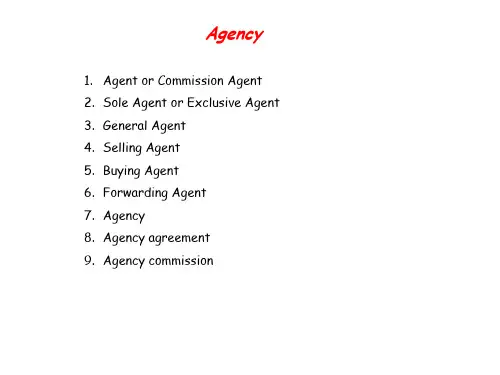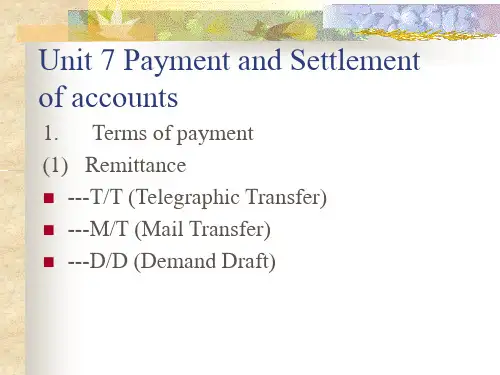3.1.3 Offers and Counter Offers Study Guide
•
• • • • • • • • • • • •s lesson, students are required to have the ability of writing offers and counter offers through learning about corresponding words, expressions and sentence menus existing in them; to grasp writing contents, writing methods, as well as writing skills in such a process. 1. Brief introduction of offers and counter offers Offers can be divided into two types: firm offers and non-firm offers. If it’s a firm offer , the period for which the offer is valid should be stated clearly .Otherwise , it’s a non firm offers , which is usually made by using such phrases as “ Subject to our final confirmation ” , “ Subject to prior sale ” or “ Without engagement ” . When an offeree partly agrees or disagrees to the price, packing, shipment or other trade terms given by the offer and states his own opinions instead, this is called counter offer. Such kind of business letters should be written with the utmost care and with an eye to good will and future development. 2. How to write offers and counter offers Good offers and counter offers usually have the following essential writing strategies: A typical firm offer should include the following: (1) An expression of thanks for the enquiry; (2)Name of the goods, quality, quantity, and specifications, details of prices, discounts, terms of payments, packing and date of delivery; (3)The validity of the offer. Usually use such phrases as “subject to your reply reaching us by(before)…”,“subject to your reply here within…days” “this offer is firm (valid ,open ,good ) for…days ” ; (4)An expression hopes for an order. Otherwise, a non-firm offer doesn’t include point 3, and sometimes might contain even fewer points of the above. In a non-firm offer such phrases are often used as “without engagement (obligation)” “subject to prior sale” or “subject to our final confirmation”. A counter-offer should include the following: (1) Thank the supplier for the offer; (2) Express regret at inability to accept and state reasons; (3) Put forward amendments or new proposals; (4) Suggest that there may be other opportunities to do business together. Replies to counter-offers, whether favorable or unfavorable, should be punctual, courteous and considerate.


![国际商务函电电子课件 3[1][1].1.5 Conclusion of Business](https://uimg.taocdn.com/4e9091146c85ec3a87c2c5bf.webp)



![国际商务函电电子课件 3[1][1].1.3 Offers and Counter Offers](https://uimg.taocdn.com/1394bfc37f1922791688e8af.webp)



